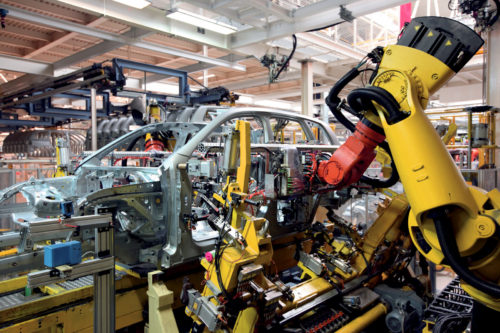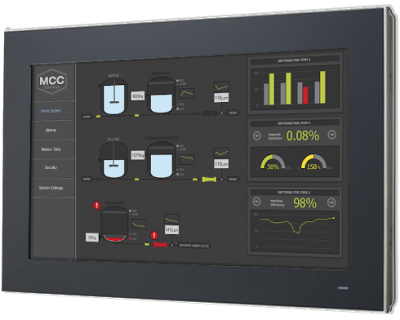Blog
How to Implement Lean Manufacturing Processes
By Megan Ray Nichols
Lean manufacturing is the go-to model in a variety of industries for managing teams and ensuring a high-quality end-product.
Construction, software development, traditional manufacturing and other processes are complex, time-consuming, and have multiple parties and steps involved. Incorporating lean principles helps maintain order and efficiency and improves profitability.

Manufacturing environments are particularly well-suited to adopting lean principles. The core ideas behind lean manufacturing are:
- Eliminating waste from all processes
- Implementing continuous improvements
- Improving the value delivered to customers
Let’s look at how to apply these concepts in a modern manufacturing environment.
1. Set Clear Goals for the Team
Going through the motions of adopting lean manufacturing won’t be much help if you’re not working toward specific objectives. The “continuous improvement” part of lean operations means managers and process experts must always be on the lookout for the next problem to solve or the next bottleneck to address. It does not mean inventing problems to solve — it’s about addressing unmet needs.
Setting goals means clearly identifying what kind of value you want to bring to the customer, which benchmarks you want to improve upon and which process changes you can implement to bring it about.
2. Map All Workflows and Value Streams
Making process changes in the name of lean manufacturing requires a thorough visual understanding of the facility’s or company’s workflows. Mapping workflows includes every process, no matter how minor, and all the equipment, people and other assets required to make it happen. It also features clear demarcations and physical boundaries between requested, in progress and finished work.
Visualization helps identify which industrial and support tasks directly aid in the creation of value and which do not. It also uncovers areas of process duplication and wasted effort, as well as opportunities to consolidate different departments or processes. Remember to look for the following types of waste:
- Product defects
- Inefficient motion or transportation
- Overproduction
- Idle time
- Inventory inaccuracy
- Inefficient motion or travel
3. Look for Ways to Make Work More Continuous
After mapping your manufacturing processes and the people and equipment involved, you’re ready to focus on efficiency. This is one of the most important and rewarding steps, but it may also be one of the most time- and effort-intensive. Here are some areas to focus on:
- Look at traffic flow in the facility. Is it logical and efficient? Do employees moving products or materials have to make frequent stops?
- Is there one department that is frequently “at the mercy of” another concerning product throughput? Sometimes it makes sense to break work up into smaller batches to improve flow from one department to the next.
- Ask employees about the tools they use in their daily tasks. Are there any cost-effective changes or investments worth making that could improve their completion time for critical tasks?
Depending on the size of the operation, managers may find value in IoT devices. That includes wearables and connected material handling equipment. This tech can gather data on key processes and better understand where delays are happening, and also determine where the facility’s capacity may not be up to the task.
4. Shift From Push to Pull
The traditional approach to manufacturing is known as “push.” This is where team leaders and managers take the available work that needs doing and push it out to a responsible team.
Lean manufacturing requires a shift to a “pull” mindset. This is where all pending tasks are stored in a queue. Instead of managers pushing work to developers or laborers, team members without an active job pull the highest-priority task themselves from the list and begin working on it.
Naturally, managers still have a role to play even in a pull-based system. Benchmarks like task cycle times and product throughput can help identify further opportunities to refine the work handoff process.
5. Continue Seeking Constant Improvement
Roadblocks and interruptions can happen at any time, which is why seeking constant improvement is perhaps the most important tenet of lean manufacturing. In a way, this means the preceding steps never really stop. It also means managers and team leaders should develop a rapport with employees and regularly touch base with them about what’s working well and what’s giving them grief.
Try the “plan, do, check, act” (PDCA) process. This is a repeatable workflow designed to help workplace leaders and employees find and define opportunities, create and implement solutions, and then check and document the results.
For instance: It’s not uncommon for employees to report spotty internet connectivity in the work environment that slows order picking or other workflows. If your own PDCA uncovers something like that, constant improvement might involve testing for EM interference in the workplace or investing in antennas, spectrum analyzers or preamplifiers.
Sometimes the investment isn’t about technology at all, but instead about finding minor process changes that deliver big results.
Further Benefits of Lean Manufacturing
Ultimately, lean manufacturing is about developing a shared leadership model. Instead of having opportunities and changes defined by those at the top, it diffuses responsibility throughout the organization and encourages new levels of process ownership.
Presenting lean manufacturing ideals to your workforce for the first time can feel overwhelming. Thankfully, the system is built on simple, repeatable and logical concepts that anyone can use to identify opportunities, create positive change and deliver value to customers.
Written by Megan R, Nichols


